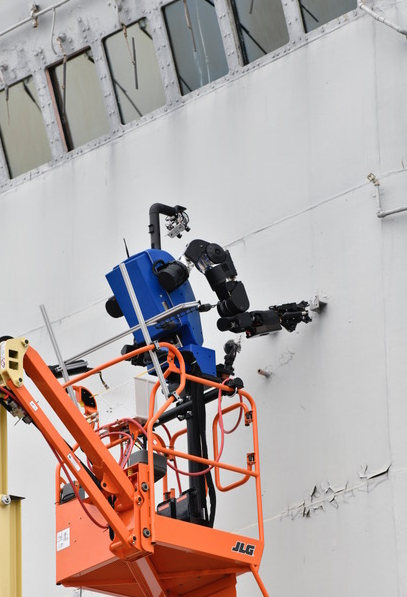Sarcos Technology and Robotics Corp., which develops dexterous robotic systems that augment humans to enhance productivity and safety, said recently that the company has executed field trials demonstrating improved worker safety and productivity for shipyard operations.
Sarcos robotic systems are designed to carry out maintenance, inspection, and repair activities, on and around ships that are underway and pier side, creating safer and more effective shipyard operations and improving the efficiency of sailors and shipyard workers.
In September, the company completed a successful field trial for the U.S. Navy at the Repair Technology Exercise (REPTX) at the Naval Base Ventura County in Port Hueneme, Calif. The company performed field tests on the ground and at height using a suite of Sarcos solutions, including the Guardian DX teleoperated dexterous robot the for defense; the Sapien 6M dexterous robot; Sapien Sea Class underwater robot; and the Guardian S remote visual inspection robot.
Sarcos robots are designed to reduce employee injuries while increasing productivity, particularly in dynamic environments such as shipyards. Specific shipyard tasks that Sarcos robots can perform include:
• The Sapien 6M and Guardian DX robots can be teleoperated and safely use a variety of tools while working at height aboard ship or pier side. They can be mounted to a mobile lift platform to perform visual inspections, remove rust and paint with off-the-shelf tools, laser ablation, and repairs using cold spray.
• The Sapien Sea Class underwater robot, integrated with a remotely operated vehicle (ROV), is designed for both shallow and deep underwater use up to 1 kilometer and can perform inspections on a ship’s hull, propeller shaft, and propeller shaft tube, along with recovering unidentified objects from a ship’s hull.
• The Guardian S visual inspection robot, which can traverse ferromagnetic vertical surfaces and access confined spaces, can be deployed inside and outside a ship to identify foreign objects.
“It is imperative for the U.S. Navy to find solutions that will enable us to maintain mission-readiness, particularly while at sea,” said Janice Bryant, expeditionary and sustainment technology manager, Naval Sea Systems Command. “The technologies demonstrated at REPTX for ship inspection, sustainment, and repair using tele-operated at-height capabilities will have a significant benefit to increase Navy readiness. We look forward to continuing our work with solution providers to rapidly field for effect.”





